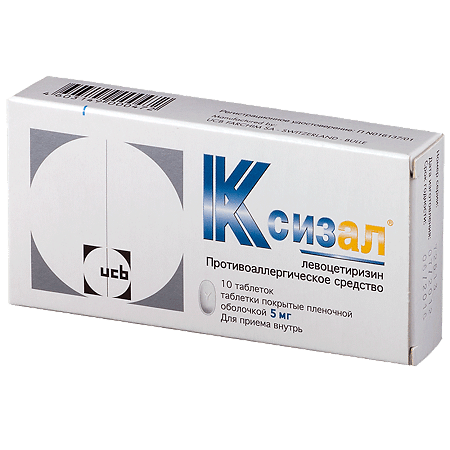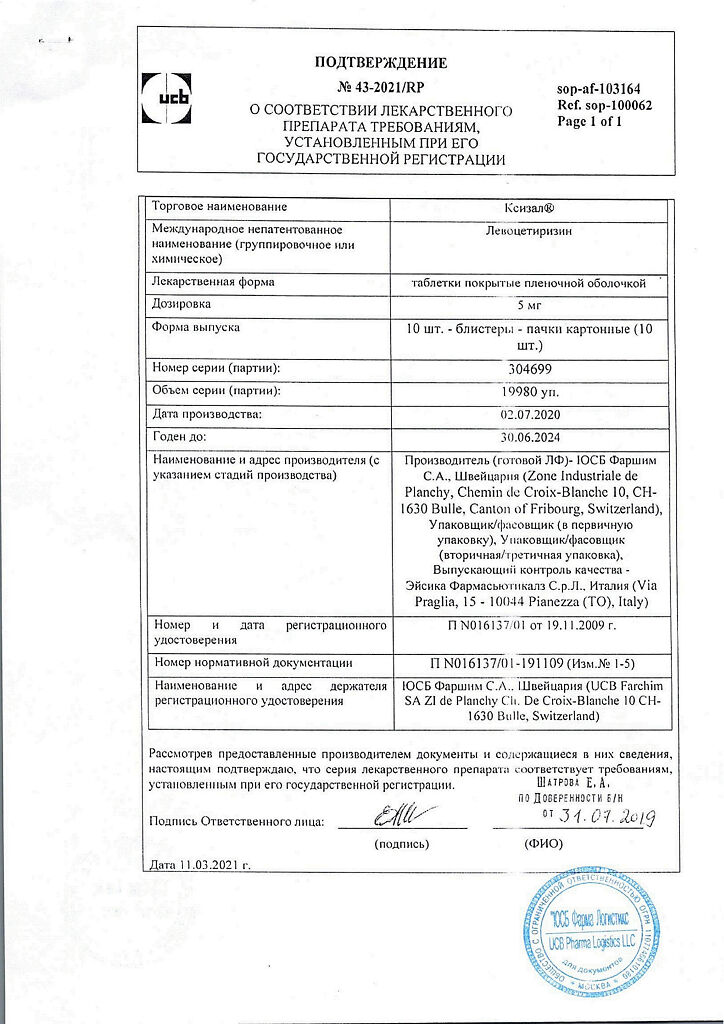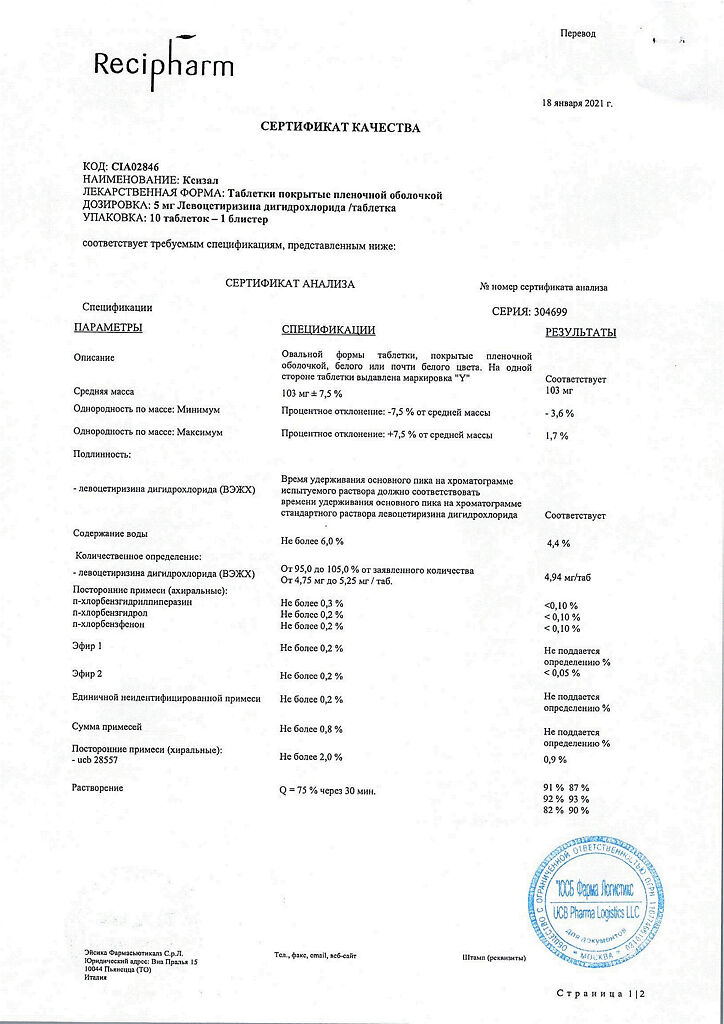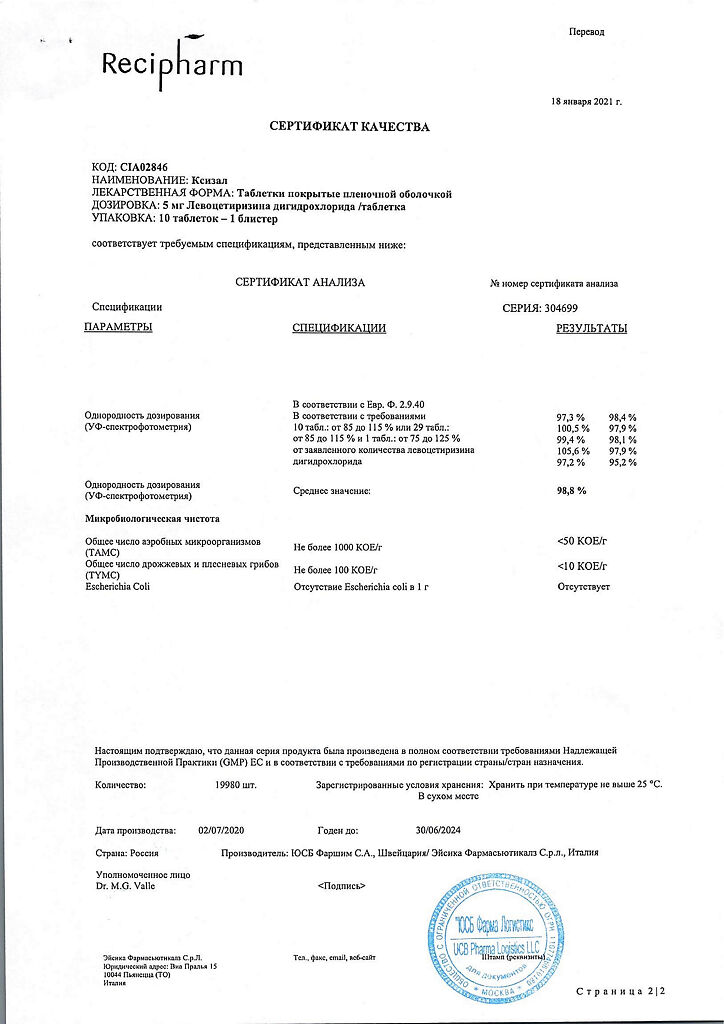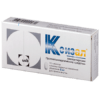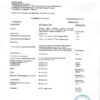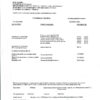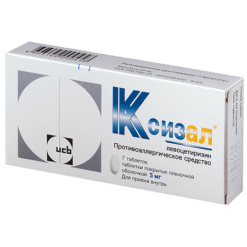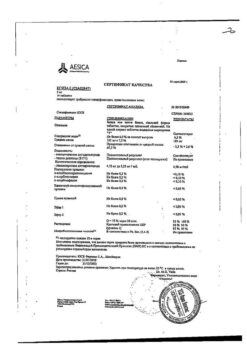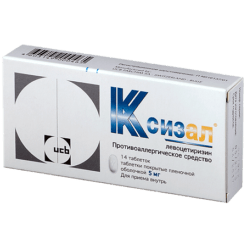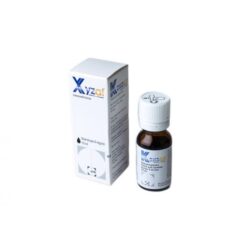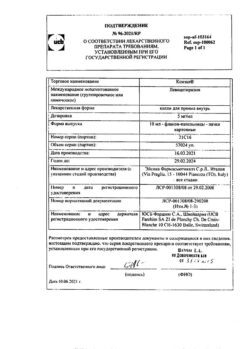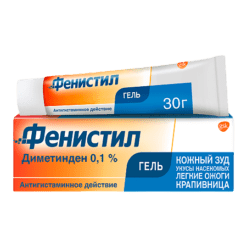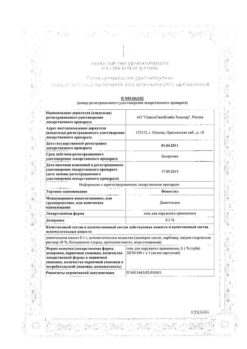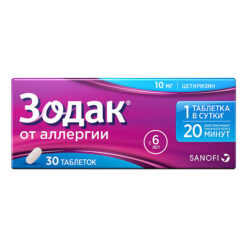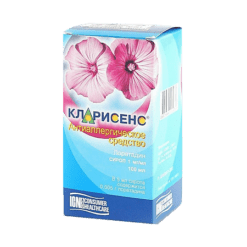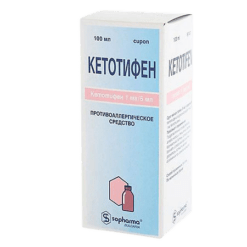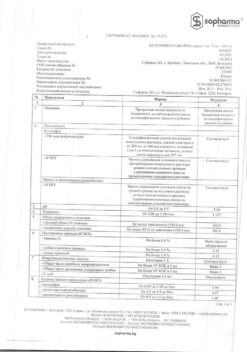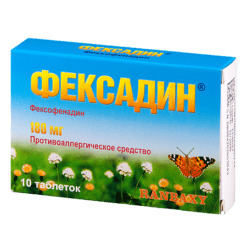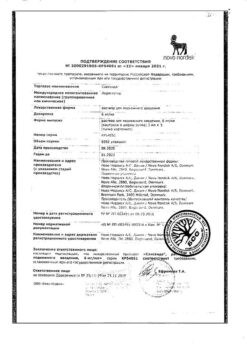No products in the cart.
Description
Quincke’s oedema, Nasal mucosal oedema, Pollinosis, Dermatosis, Allergic rhinitis, Skin itching, Urticaria, Allergic conjunctivitis
– Treatment of symptoms of allergic rhinitis (including year-round (persistent) and seasonal (intermittent) allergic rhinitis and allergic conjunctivitis such as itching sneezing nasal congestion rhinorrhea lacrimation conjunctival hyperemia;
– Pollinosis (hay fever);
– Urticaria;
– Other allergic dermatoses with itching and rashes.
Indications
Indications
– Treatment of symptoms of allergic rhinitis (including year-round (persistent) and seasonal (intermittent) allergic rhinitis) and allergic conjunctivitis such as itching, sneezing, nasal congestion, rhinorrhea, lacrimation, conjunctival hyperemia;
– hay fever (hay fever);
– urticaria;
– other allergic dermatoses accompanied by itching and rashes.
Pharmacological effect
Pharmacological effect
Antiallergic agent – H1-histamine receptor blocker
ATX code
Special instructions
Special instructions
The intervals between doses should be individualized depending on renal function.
Caution is recommended when consuming concomitantly with alcohol.
If patients have predisposing factors for urinary retention (eg spinal cord injury, prostatic hyperplasia), caution should be exercised as levocetirizine may increase the risk of urinary retention.
Caution should be exercised in patients with epilepsy and increased convulsive readiness since levocetirizine may cause exacerbation of seizures.
The reaction to skin allergy tests is suppressed by antihistamines and you must refrain from taking the drug for 3 days before testing.
Itching may occur after stopping taking levocetirizine, even if such symptoms were not present at the beginning of treatment. Symptoms may go away on their own. In some cases, symptoms may be severe and may require resumption of treatment. Once treatment is resumed, these symptoms should subside.
Children
Levocetirizine film-coated tablets are contraindicated in children under 6 years of age since this dosage form does not allow the use of an appropriate dosage for this age group. It is recommended to use the pediatric dosage form (oral drops).
Impact on the ability to drive vehicles. Wed and fur.:
Active ingredient
Active ingredient
Levocetirizine
Composition
Composition
1 tablet contains:
Core:
active substance: levocetirizine dihydrochloride 5.0 mg;
excipients: lactose monohydrate 63.50 mg, microcrystalline cellulose 30.00 mg, colloidal silicon dioxide 0.50 mg, magnesium stearate 1.00 mg.
Shell: opadry Y-1-7000 3.00 mg (contains hypromellose 62.5%, titanium dioxide (E171) 31.25%, macrogol 400 6.25%).
Pregnancy
Pregnancy
Pregnancy
Data on the use of levocetirizine during pregnancy are virtually absent or limited (less than 300 pregnancy outcomes). However, the use of cetirizine racemate levocetirizine during pregnancy (more than 1000 pregnancy outcomes) was not accompanied by malformations and intrauterine and neonatal toxic effects. Animal studies have not revealed any direct or indirect adverse effects on the course of pregnancy, embryonic and fetal development, childbirth and postnatal development.
During pregnancy, the use of levocetirizine may be considered if necessary.
Breastfeeding period
Cetirizine racemate of levocetirizine is excreted in breast milk. Therefore, it is also likely that levocetirizine is excreted in breast milk. Breastfed children may experience adverse reactions to levocetirizine. Therefore, caution must be exercised when prescribing levocetirizine during breastfeeding.
Fertility
There are no clinical data on levocetirizine.
Before using the drug, if you are pregnant or think you might be pregnant or are planning a pregnancy, you should consult your doctor.
Contraindications
Contraindications
Hypersensitivity to the active substance cetirizine hydroxyzine, any piperazine derivative or to any other excipient of the drug.
Lactase deficiency, lactose intolerance, glucose-galactose malabsorption.
End-stage renal failure (creatinine clearance <10 ml/min).
Children’s age up to 6 years.
With caution:
Side Effects
Side Effects
Headache, drowsiness, dry mouth, fatigue.
Rarely – migraine, dizziness, dyspeptic disorders, allergic reactions (angioedema, rash, urticaria, itching).
Interaction
Interaction
The interaction of levocetirizine with other drugs has not been studied.
When studying the drug interactions of cetirizine racemate with antipyrine azithromycin cimetidine diazepam erythromycin glipizide ketoconazole and pseudoephedrine, no clinically significant adverse interactions were identified.
When used simultaneously with theophylline (400 mg/day), the total clearance of cetirizine is reduced by 16% (theophylline kinetics does not change).
A study with simultaneous administration of ritanovir (600 mg 2 times a day) and cetirizine (10 mg per day) showed that the exposure of cetirizine increased by 40% and the exposure of ritanovir changed slightly (-11%).
In sensitive patients, the simultaneous use of levocetirizine and alcohol or drugs that have a suppressive effect on the central nervous system (CNS) can cause lethargy and deterioration in performance.
Overdose
Overdose
Symptoms: may be accompanied by signs of intoxication in the form of drowsiness; in children, an overdose of the drug may be accompanied by anxiety and increased irritability.
Treatment: if symptoms of overdose appear (especially in children), the drug should be stopped, gastric lavage, activated charcoal, and symptomatic therapy are necessary. There is no specific antidote.
Storage conditions
Storage conditions
In a dry place, at a temperature not exceeding 25 °C
Shelf life
Shelf life
4 years
Manufacturer
Manufacturer
YUSB Farshim S.A., Switzerland
Additional information
| Shelf life | 4 years |
|---|---|
| Conditions of storage | In a dry place, at a temperature not exceeding 25 °C |
| Manufacturer | SSB Farshim S.A., Switzerland |
| Medication form | pills |
| Brand | SSB Farshim S.A. |
Other forms…
Related products
Buy Xizal, 5 mg 10 pcs. with delivery to USA, UK, Europe and over 120 other countries.

